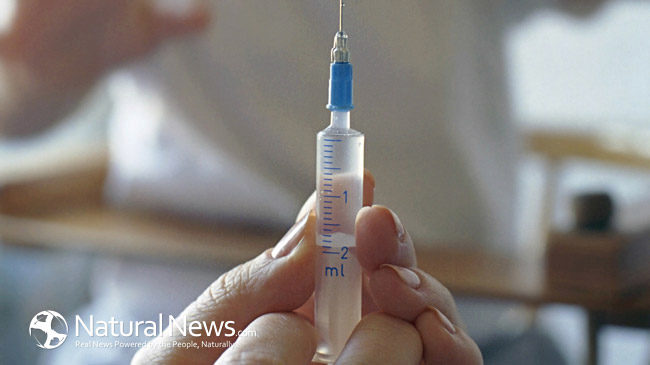If Mark Prausnitz has it his way, a small, bandage-like device covered with 100 tiny needles will be the way people receive vaccinations in the near future. Prausnitz, a professor at the Georgia Tech School of Chemical & Biomolecular Engineering, has been involved in the research and development of self-administered microneedle vaccine patches for protection against flu, polio and measles for about 20 years.
The tear-shaped patch, which is covered with 100 microscopic needles, would puncture the skin, ultimately dissolving so the vaccine gets into the body. While some may cringe at the thought of so many needles pressed against them, Prausnitz points out that it’s different from the traditional shot. When it comes to pain, he explains that the needles are microscopic and really only visible to the naked eye as a shiny surface. “It wouldn’t be like sandpaper or scratching,” he says. “You would have a hard time feeling a difference between the needles being there or not being there.”
Prausnitz, who is also the director of the Center for Drug Design, Development, and Delivery at Georgia Tech, explains that the Centers for Disease Control and Prevention (CDC) is on board with this development. Specifically, the CDC is eying the measles vaccine patch to be tested on humans in 2017; animal testing has already proven successful. And as soon as this summer, he’s slated to test a flu vaccination patch on about 100 volunteers as part of a small trial that he hopes will pave the way to larger trials and more testing.
“We would like people to ultimately self-administer their flu vaccines,” he says.
Vaccine Patch Poised to “Get the Vaccine to a Lot More People”
Self-administration of such vaccines is a key factor behind the patch development; Prausnitz feels that the patch method has advantages over the traditional delivery method.
First, he says it’s beneficial for those in the developing world who need to travel to a clinic to get the shot. It’s there where a professional administers the vaccine, which is kept in refrigerators. The patch negates this need, allowing more people to have access to vaccines without medical experts or refrigeration.
The patch is said to have yet another advantage. Because the needles dissolve in the skin, the fear of a medical professional accidentally getting jabbed with a needle is removed from the equation. There’s no needle to dispose of, which Prausnitz feels is another plus of this so-called “ouchless” vaccine.
Why We Shouldn’t Get Excited About the Vaccine Patch
While testing and trials are still in the works, one has to wonder about the long-term safety behind this development. Sure, it will no doubt be a welcome relief for pro-vaxxers who are determined to see most everybody — even those who are against the shots — receive vaccinations. They’re likely to view it as a kind of all-access patch to better health, but like any new development, it’s important to remain cautious. Only until it’s been proven effective for a while should it be embraced.
Sadly, while many vaccinations have been proven effective — at least by the medical powers that be and throughout the Big Pharma realm — many families know otherwise. Several people have been gravely impacted by the health hazards linked to vaccines. Tell Marysue Grivna of Tampa, Florida, that this patch should be put in place. Surely Grivna, a young girl who was left paralyzed with a debilitating brain disease just a few days after getting a flu vaccine, would be against it.
Tell the family of five senior citizens who all died within one week of receiving a flu shot at a Georgia care facility in 2014.
The stories go on. In China, where suspicions about many medical activities and related reports remain strong among residents, 17 deaths — believed to be linked to a hepatitis B vaccination — went under investigation in 2014.
The bottom line is that health problems that develop after a vaccination — often in otherwise healthy people like Grivna — is common. While families are left struggling with the loss of a loved one or dealing with their own devastating health changes which occured around the time of getting a vaccination, pro-vaxxers, Big Pharma and the likes of joksters such as Jimmy Kimmel (who poked fun at vaccine-damaged children) continue to look the other way.
The vaccine patch as suggested by Prausnitz is an interesting notion. The fact that it bypasses any health hazards associated with accidentally getting poked by a used needle is perhaps the only good aspect. Otherwise, the thought of delivering vaccines to even more people is a bit unsettling as it may mean that a greater amount of individuals will be exposed to health setbacks as experienced by many people around the world.
Sources for this article include:
(1) http://www.npr.org
(2) http://www.naturalnews.com
(3) http://www.naturalnews.com
(4) http://www.foxnews.com
(5) http://www.naturalnews.com





